6. Game of Death (Robert Clouse, Bruce Lee, 1978, Hong Kong)
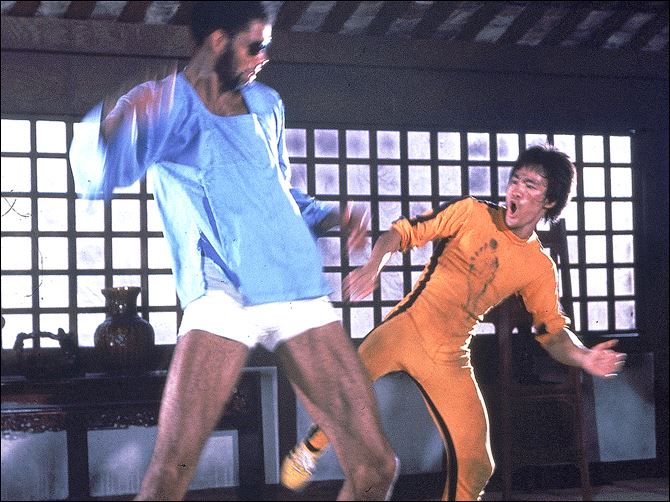
Hai Tien is a retired champion of martial arts who is approached by the Korean mafia to lead a team into a pagoda, where something very valuable is hidden on the top floor. Guns are not allowed in the pagoda, and each level is guarded by a supreme martial artist.
Bruce Lee died while shooting this film and Tarantino could not resist paying homage to both the star and the notorious film.
The similarity is quite obvious in the scenes in “Kill Bill Vol. 1” that take place in the House of Blue Leaves, where The Bride arrives to confront O-Ren and her gang, wearing an identical yellow tracksuit to the one Lee wears when he arrives at the pagoda in the original film.
Some of the close ups of The Bride are also similar to the ones of Lee’s character in “Game of Death”.
7. A Better Tomorrow 2 (John Woo, 1987, Hong Kong)
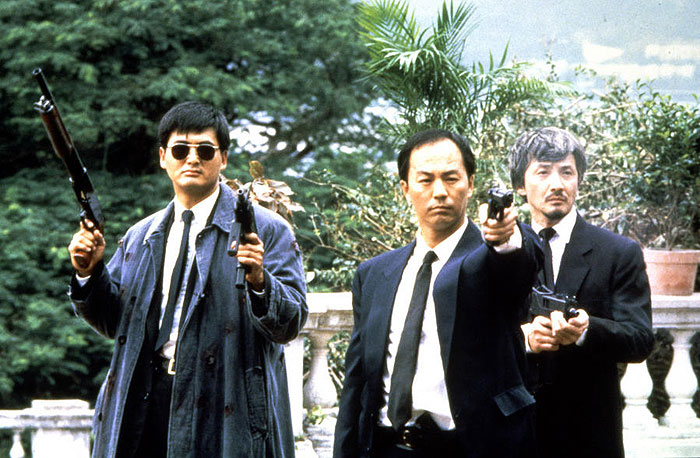
Several years after the events of the first movie, Tse Ho and Tse Kit are undercover police agents spying on crime boss Lung, who allegedly owns a shipbuilding company. However, the actual head of the syndicate is Lung’s assistant, Ko, who wants to kill him and take his position.
During the assassination attempt, the two brothers save Lung and transfer him to New York, where Mark “Gor” Lee’s twin brother Ken owns a restaurant. The three of them eventually decide to return the former boss to Hong Kong and arrest Ko.
Tarantino has said he was heavily inspired by the style of the characters in this film by John Woo, particularly the way they dressed in black suits and long dusters. The Crazy 88 in “Kill Bill Vol. 1” are all similarly dressed, as are the characters in “Reservoir Dogs”.
8. City on Fire (Ringo Lam, 1987, Hong Kong)
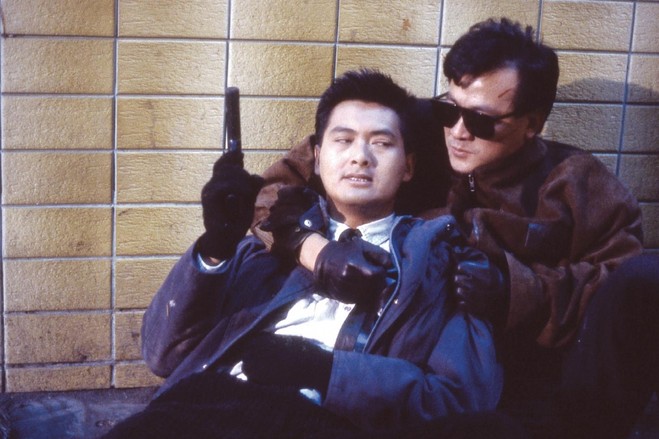
The film revolves around Officer Ko Chow, who is forced to go undercover by his uncle (who is also his superior) after the death of a fellow cop, who was also working the same position in a crime syndicate. However, as Ko manages to befriend many of the members of the crime ring, he becomes attached to Fu, one of the higher members.
Furthermore, he begins to doubt his own morality, as he finds himself pursued by a police inspector and gets into trouble with his girlfriend.
Tarantino borrowed heavily from the unusual narrative and the poetic depiction of violence of Ringo Lam’s film when he made “Reservoir Dogs”. Furthermore, there many similarities in the story, which once again features an undercover cop torn between his duty and his newly-acquired friends.
Lastly, scenes like the one with the “Mexican stand-off” are present in both films.
9. The Killer (John Woo,1989, Hong Kong)
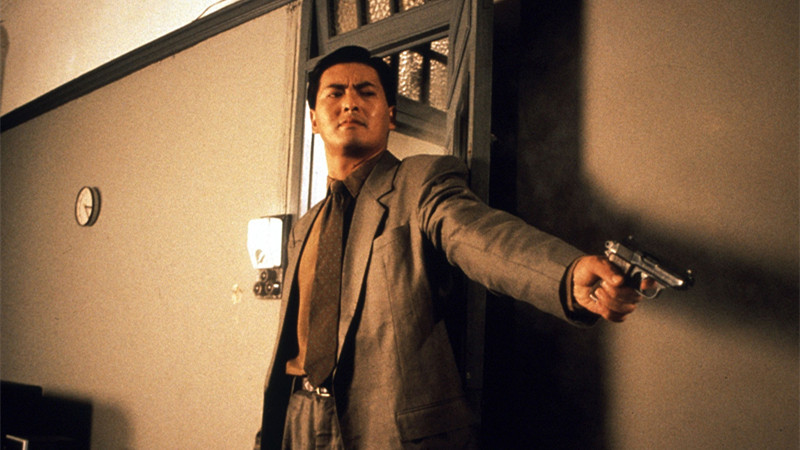
Ah Jong is a contract killer who, during his latest assignment, accidentally traumatizes a female singer at a nightclub. In order to pay for her operation, he agrees to take on one last mission.
John Woo’s distinct style, which Tarantino has repeatedly deified, found its apogee in “The Killer”, with its stylized violence, constant bloodbaths, slow motion editing, impressive action scenes, the elaborate usage of guns, and the flying of pigeons, a motif that began in this particular film. Furthermore, the final scene in the church is one of his most distinct scenes.
A great deal of the character of The Bride is based on Ah Jong, played by Chow Yun Fat, as “The Killer” was one of the films shown to Uma Thurman to prepare her for her role. In particular, the mercy Ah Jong repeatedly shows the girl he injured is reminiscent of the way The Bride treats Vernita Green’s daughter.
In a trivia regarding Tarantino’s appreciation toward Woo, there was once an episode where a studio guy once said to Tarantino, “I suppose John Woo can direct action sequences,” and Tarantino looked at him, dumbfounded, and said, “Yeah, and I suppose Michaelangelo can paint fuckin’ ceilings.”
10. Samurai Fiction (Hiroyuki Nakano, 1998, Japan)
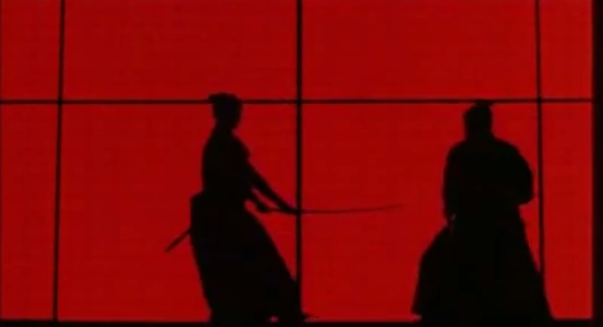
This film revolves around Inukai Heishiro, the son of a clan officer. One of the clan’s most precious heirloom is stolen, a sword given to them by the shogun, while its leaders intended to use it as a gift of peace and loyalty to the shogun in order to avoid war.
Heishiro decides to retrieve the sword from the samurai Kazamatsuri, who stole it by himself, despite his father’s pleads to stay put. When he realizes there is no way to stop his son, he sends two ninjas after him for protection.
Tarantino incorporated many of the cinematographic techniques presented in “Samurai Fiction” in the “Kill Bill” movies, with the scene where The Bride fights behind the blue-screen at the House of Blue Leaves as a clear reference to the opening of “Samurai Fiction”.
Tomoyasu Hotei, whose song “Battle Without Honor or Humanity” was included on the soundtrack of Tarantino’s film, plays Kazamatsuri, and he also composed the film’s soundtrack.
Minor similarities also include Gogo’s technique with the meteor hammer in “Kill Bill Vol. 1”, which is similar to the one the old monk implements in “Master of the Flying Guillotine”, while most of the gory scenes in the film share many similarities with scenes from Takashi Miike’s “Ichi The Killer”.
Gogo’s character is quite a bit like Takako Chigusa in Kinji Fukasaku’s “Battle Royale”, another character played by Chiaki Kuriyama, as Tarantino has stated that this particular film is one his favorites.
Honorable Mention: Tarantino pays great homage to Gordon Liu, the protagonist in the legendary kung fu films “Disciples of the 36th Chamber “and “The 8 Diagram Pole Fighter,” by casting him in both segments of “Kill Bill”. In the first one, he plays Johnny Mo, the head of the Crazy 88, O-Ren Ishii’s personal army.
In the second segment he plays Pai Mei, an immensely powerful and extremely old martial arts master who has trained Bill, The Bride, and Elle. The training sequence is similar to the one Gordon Liu undertook in “Disciples of the 36th Chamber”.
Author Bio: Panos Kotzathanasis is a film critic who focuses on the cinema of East Asia. He enjoys films from all genres, although he is a big fan of exploitation. You can follow him on Facebook or Twitter.